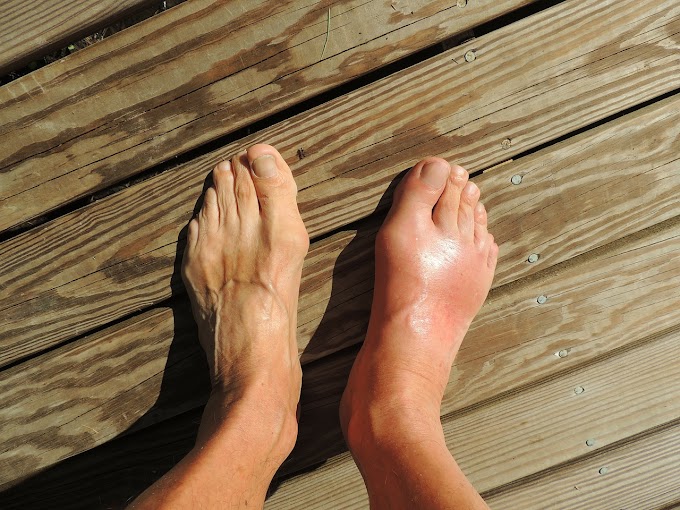SYMPTOMS
No symptoms
appear until this becomes infected or inflamed, resulting in chills, fever, and
pain. The pain may be localized in the left lower quadrant of the abdomen and
may be constant. Sometimes there is brief period of diarrhea.
If you are over 40 and have periodic
abdominal cramps, gas, and diarrhea alternating with constipation, you may have
diverticulitis.
CAUSES
Diverticula
are small pouch-like sacs on the inside of the large bowel, generally in the
descending colon. Diverticulosis is a disorder in which these pouches are
present. Diverticulitis is when they become infected and inflamed.
When a person is constipated, he tends to push too hard. The air pressure exerted by
this muscular squeeze on the bowel muscles can force small pockets to form in
the walls of the lower colon.
Once they form, diverticula never go away.
Of themselves, they provide no symptoms. The problem is that fecal matter can
collect in them and eventually attract bacteria. This results in infection or
inflammation and produces the fever, chills, and pain.
Diverticulosis occurs when the diverticula
are inflamed or infected; then the unfortunate symptoms reveal themselves.
This is another disease caused by
“civilized” refined and junk foods.
It is practically unknown in Third World nations, where people eat high-fiber diet.
More than half of those over 60 in America
have this problem.
NATURAL REMEDIES
- In order to avoid the formation of those little pouches, always avoid constipation. This is done by including roughage in your diet (fresh fruit and vegetables, bran and other sources of fiber), drinking enough water.
- Do not delay bowel movements. Have them when you
sense you ought to. Do not wait.
- Obtain adequate exercise, especially outdoors. A research study showed that men who exercised little were 2 ½ times more likely to have diverticulitis.
- Prunes, pureed fruit
juices and herb teas
are very helpful. Carrot, beet, celery
and green juices are excellent. Of the fruit juices, papaya, apple, pineapple, and lemon are outstanding for your
purposes.
- Chew nuts, seeds, and
popcorn well, so they
will be less likely to enter the diverticula.
- Eat smaller meals. Garlic heals and detoxifies.
- Rats placed on high-fat diets, for 90 weeks, all developed colon diverticula. Adding more fiber lowers the internal pressure, reducing or eliminating symptoms.
- Avoid caffeine products. They all tend to irritate the colon.
- Do not eat a lot of sugar.
- Smoking and stress make the symptoms worse.
- Girdles, belts, and
tight bands around
the waist tend to increase abdominal pressure on the colon.
- The German government recommends taking 1-3 Tbsp. crushed flax-seed 2-3 times a day with lots of water to treat diverticulitis. Psyllium seed can also be used, but it does not agree with some people (1 tsp mixed with 8 oz. glass of water or juice, taken at meal time). Either one softens stools. Slippery elm does also.
- The fibrous bark of slippery elm soothes the bowel and keeps things moving. Prunes and prune juice contain lots of fiber and have been used for constipation for centuries. Chamomile tea (2 tsp. dried chamomile per cup boiling water, steep 5-10 minutes) has an anti-inflammatory action which soothes the digestive system. Pau d’arco (2 cups daily) kills bacteria and heals.
- Here is a winning formula: Mix 2 parts wild yam, 1 part Valerian, 1 part black haw, and 1 part peppermint.
- Other beneficial herbs include Aloe Vera, golden-seal, cayenne, yarrow, papaya and red clover.
- B complex, plus acidophilus to reinforce beneficial intestinal bacteria. Beta carotene (25,000 IU daily), to
protect and heal the colon lining. Vitamin
E (600 IU) protects the bowel lining. Vitamin
C with bioflavonoids (2,000 mg
in divided doses), to reduce inflammation.
DURING THE ATTACK
As soon as an
attack begins, give yourself a cleansing enema
(2 quarts of water and juice of a fresh lemon).
Take 4 charcoal tablets with a large
glass of water.
In case of pain or spasm in the colon,
apply a heating pad over the
abdomen.
During the acute phase of an attack, it may
be best to eat a low-fiber diet for a very short time. Then return to the
high-fiber regime.
If the attack is severe, temporarily blend
your food. Drink carrot, cabbage and
green juices.
To relieve pain, massage the abdomen on the left side. Stand up and stretch.
Try to have bowel movements on schedule. Take fiber first thing in the morning and down a quart of water before breakfast.
Check your stools daily. If they are
black, this means blood is present; take a sample to a physician.









0 Comments